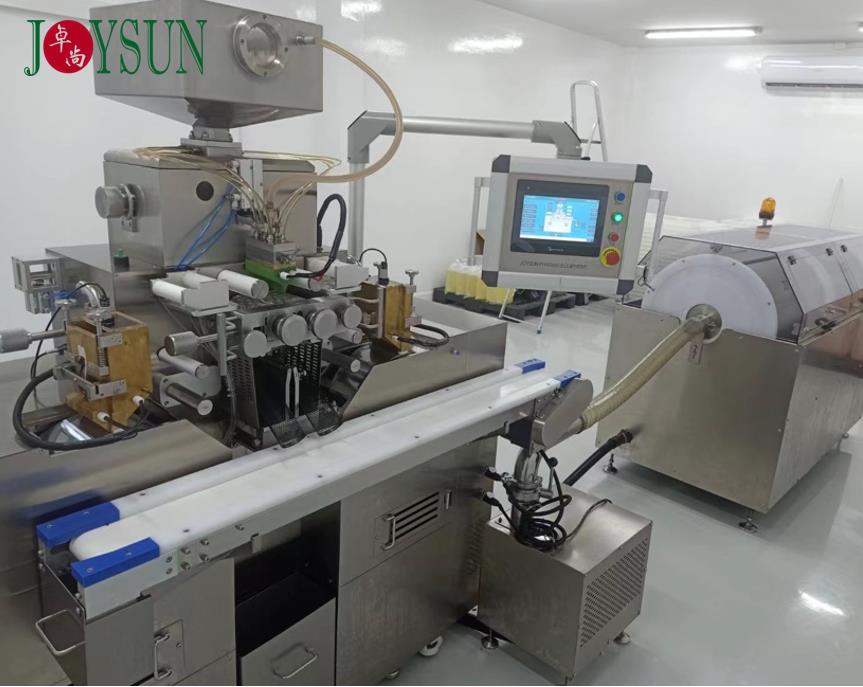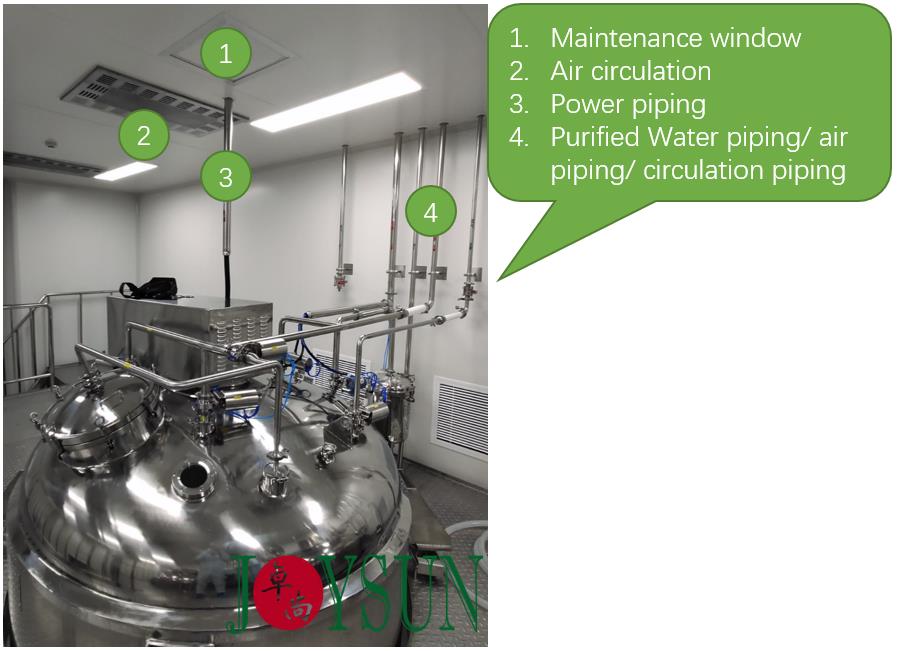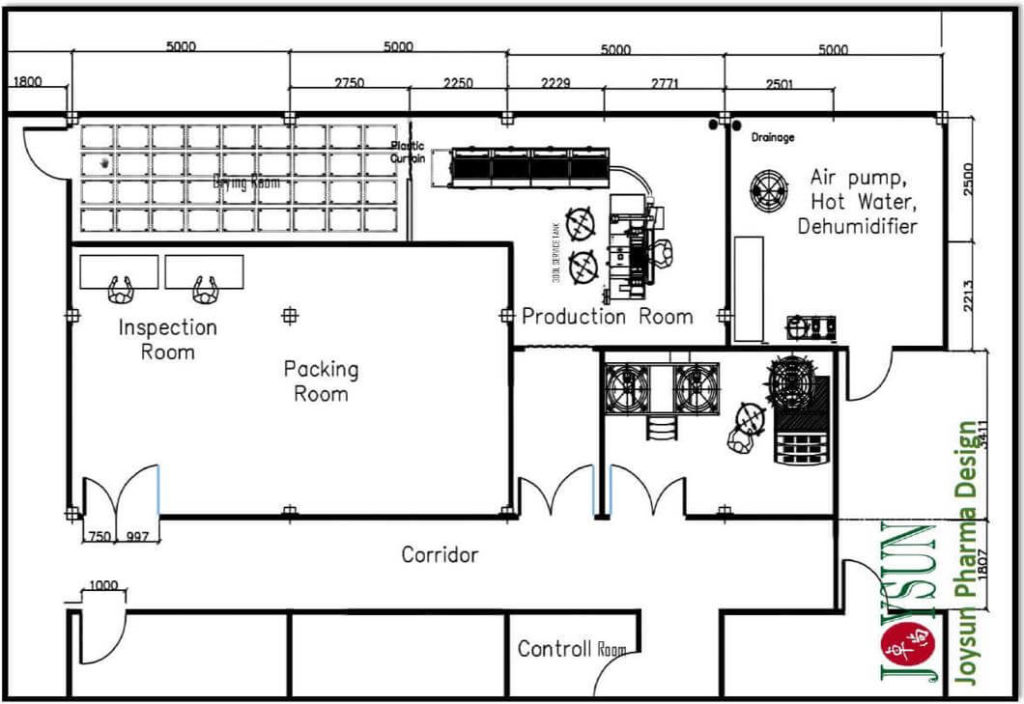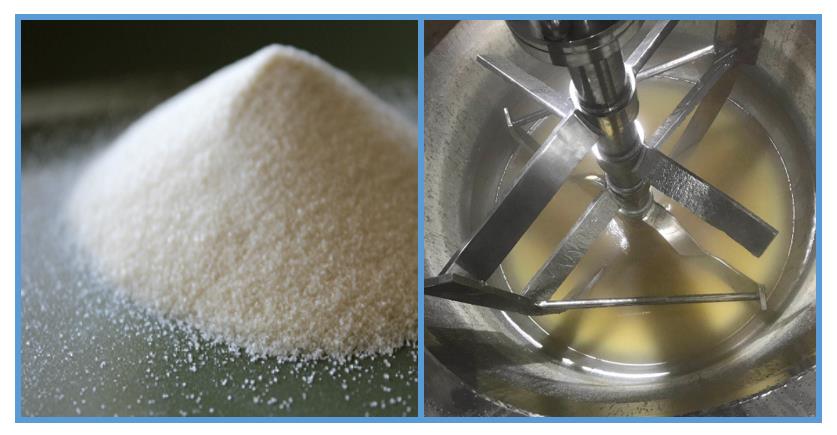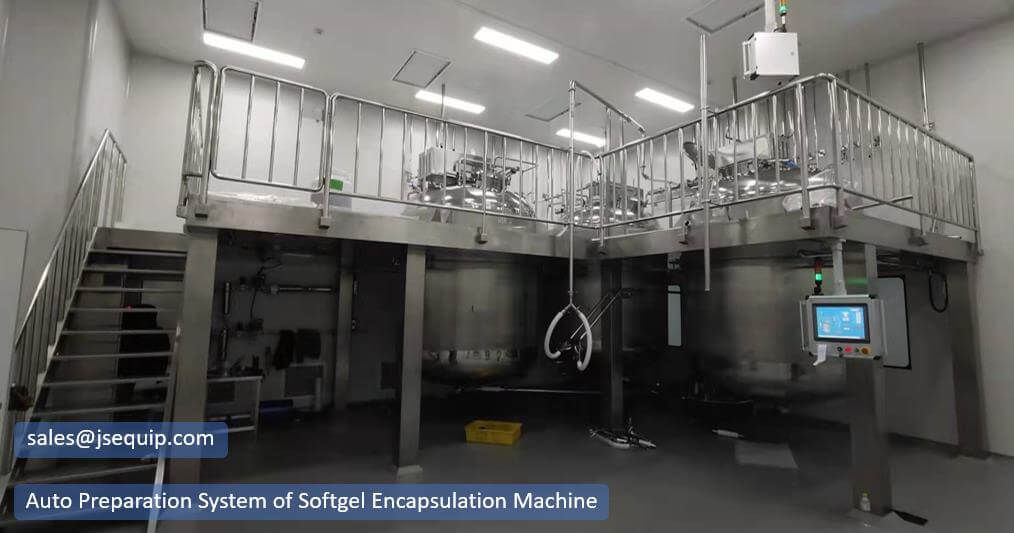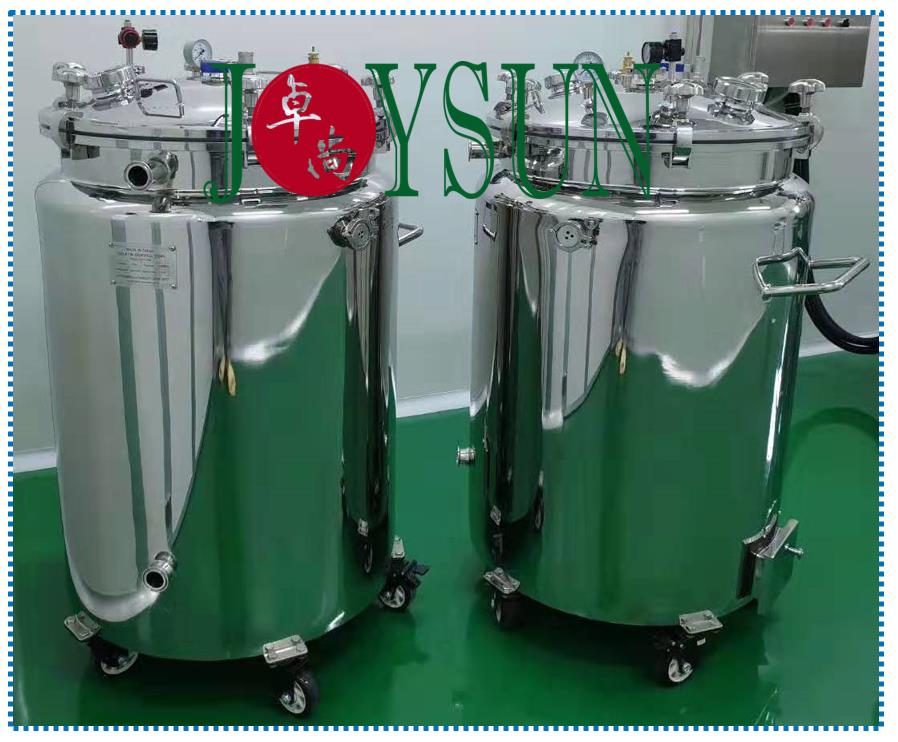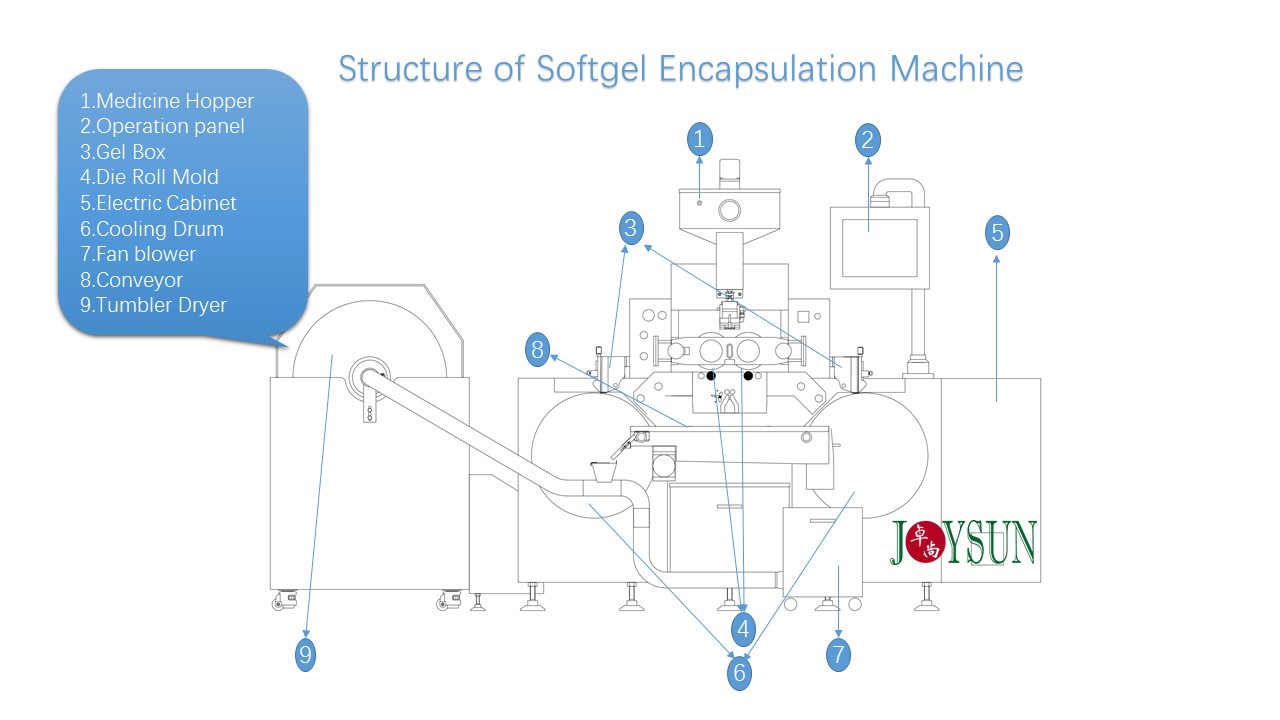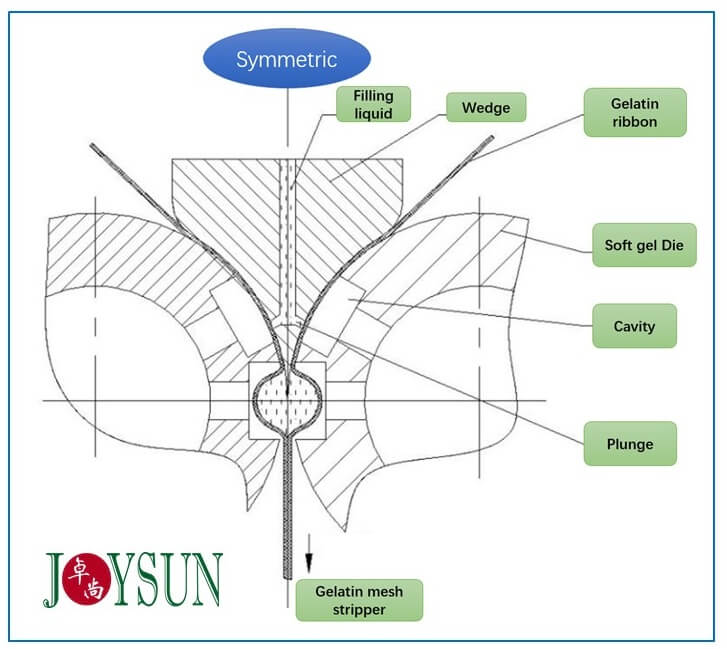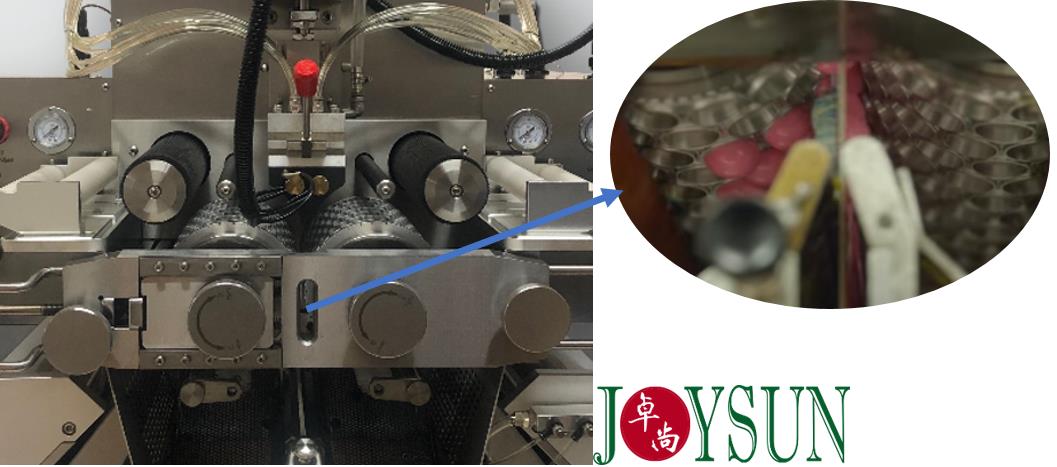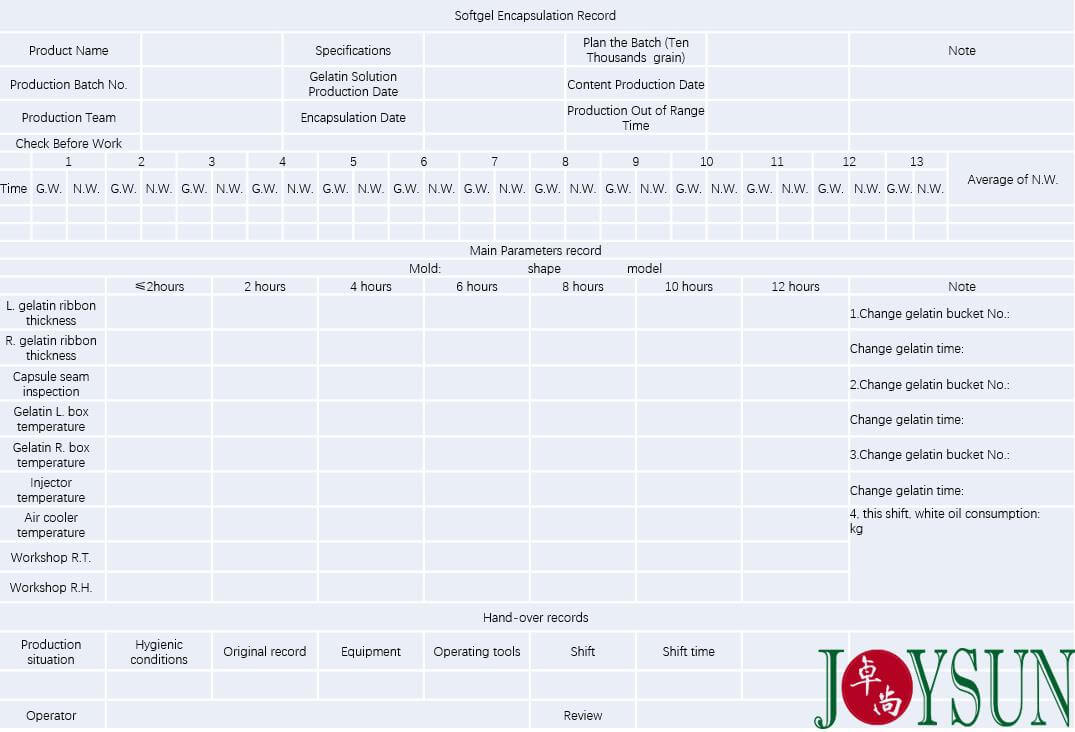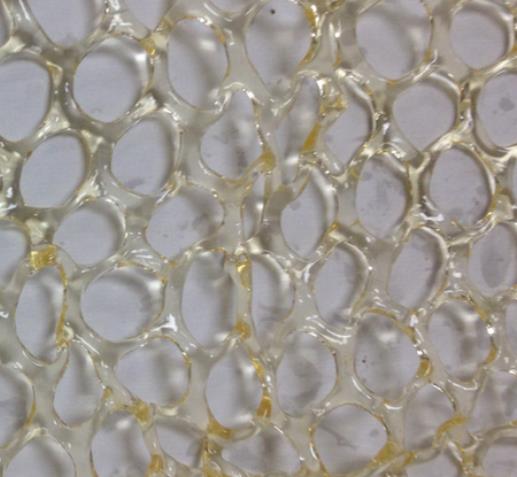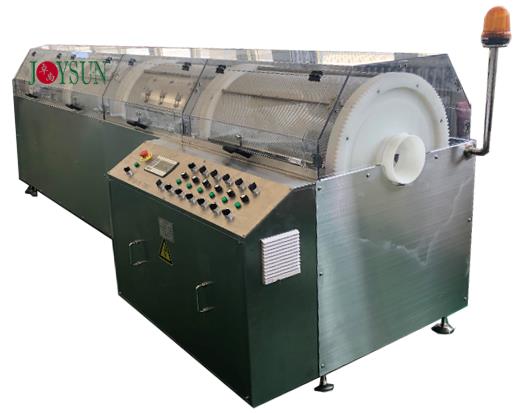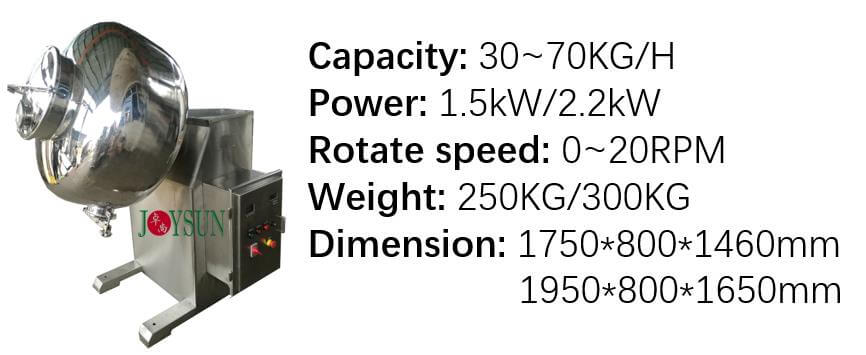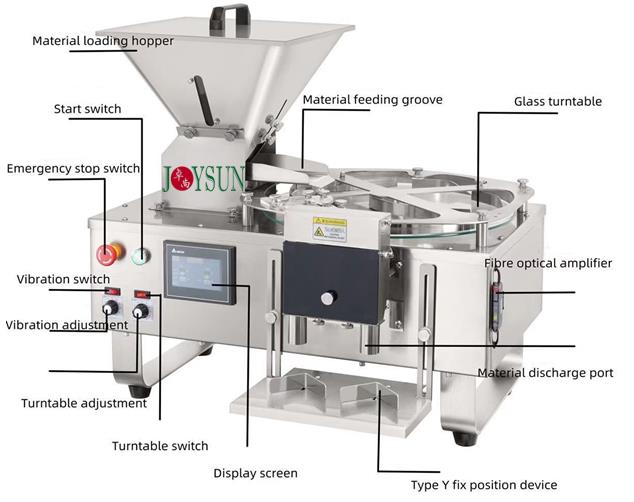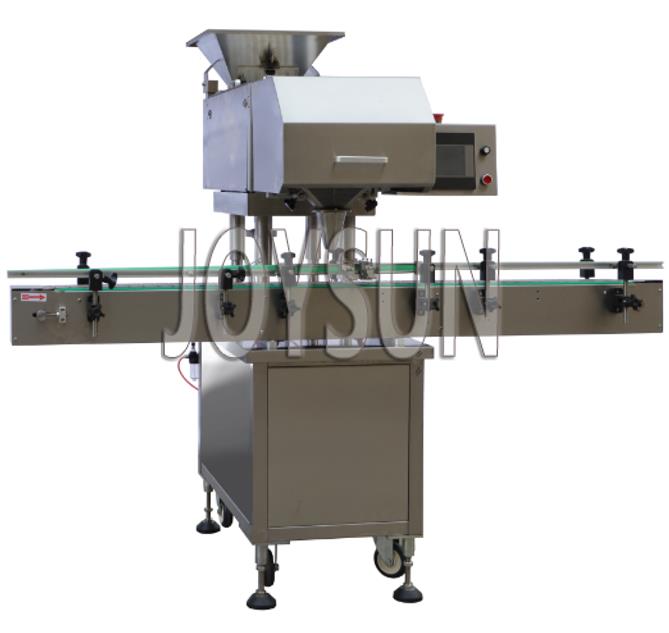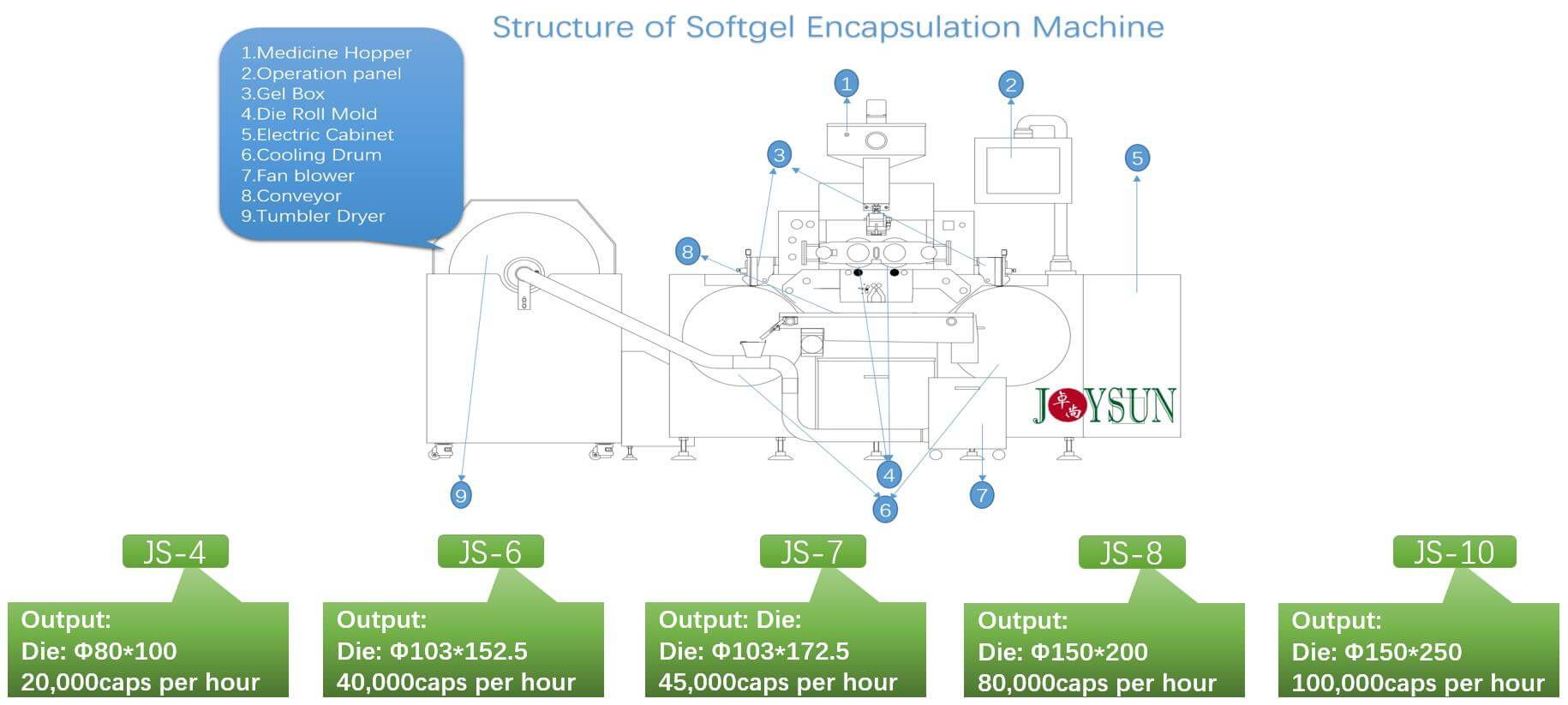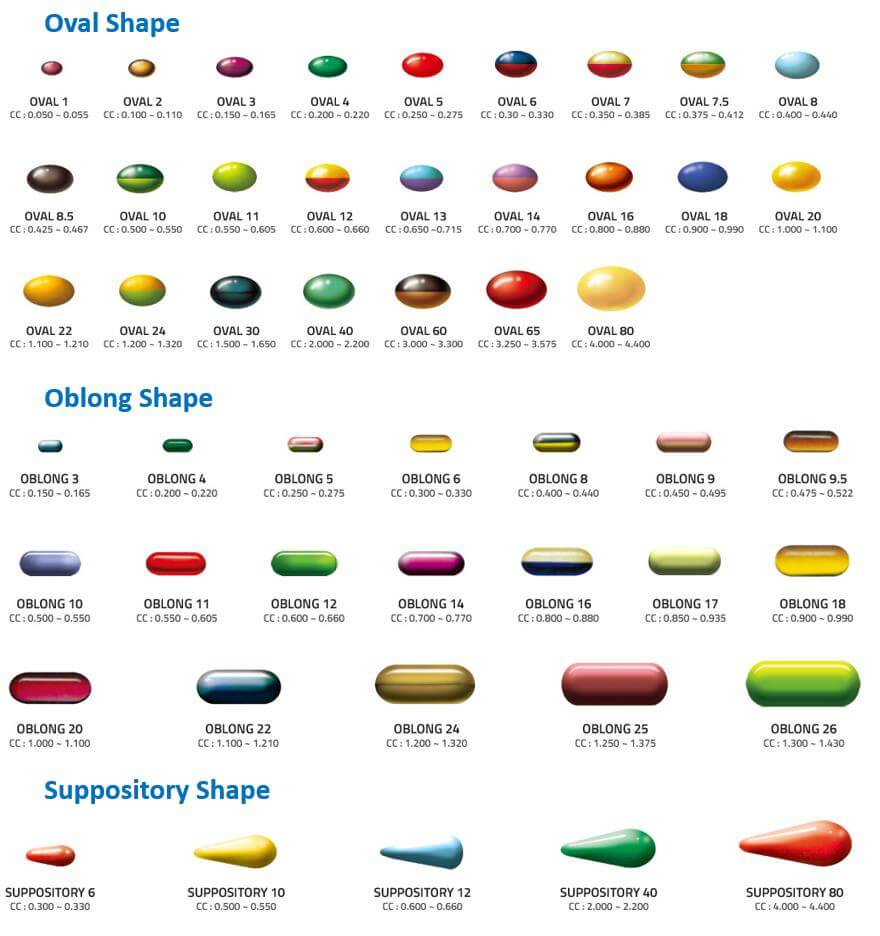Softgel Encapsulation Machine Quick Review
- by Sharry
- June 30, 2022
Quick Guide on Softgel Encapsulation Machine
Soft Gel Capsule Making Machine Information for Beginners
Softgel Encapsulation Machine Brief Origins
Softgel Technology
What does A Softgel Production Line Contain?
What Should Softgel Capsule Manufacturer Also Prepare
Production Room Condition Requirement
How to Make Softgel Capsules
STEP 1 Softgel Gelatin Melting
STEP 2 Medicine Filling Material Preparation
STEP 3 Gelatin and Medicine Holding Process
STEP 4 Softgel Encapsulation Process
STEP 5 Softgel Shaping and Cooling Process
STEP 6 Softjel Final Drying
STEP 7 Softjel Capsules Treatment After Encapsulation
Softgel Capsule Inspection
Softgel Capsule Printing
Softgel Capsule Recycle Machine
Big output Capsule Counting Filling Bottling Packaging Line for bottle/jars includes functions
FAQ
Troubleshooting
Soft Gel Capsule Making Machine Information for Beginners
Any beginner who wants to be a softgel encapsulation machine operator, sales personnel, buyer, or who just has the interest to know ‘how softgel capsule is manufactured’ can get some valuable info. from here.
Firstly, let’s start with what is ‘Softgel’?
It is an oral dosage form with a layer of a gelatin-based shell filled with oil/liquid inside. The inside liquid must not be hydrophilic, because the hydrophilic material will suck water from the shell and to break the gelatin shell causing leakage. Softgels are ideal for oils and fat-soluble formulations.
Secondly, what’s the benefit of ‘Softgel’?
♦ With decades of years of developing, testing, manufacturing, and customizing softgels for customers and the market, there is a clear understanding of softgel capsules benefits.
♦ It can be made into various and flexible shapes, suits for consumers of all ages, making dosage pill easier to swallow. The flexible design allows more options for gel capsule sizes, colors, shapes; an advantage over other types of dosage forms.
♦ The softgel capsule is hermetically sealed which is airtight, protect capsules from light and oxygen; The inside sensitive ingredients are more stable and well preserved. Also due to the sealed softgel, it has better performance to heat and temperature change and better in transport and storage.
♦ Since softgel can wrap liquid inside, it increases the bioavailability of poorly absorbed or soluble nutrients.
♦ With the appearance of vegan softgel, make it more popular than ever for vegetarians by whether using carrageenan or starch/tapioca powder.
Softgel Encapsulation Machine Brief Origins:
Soft gel Encapsulation Machine is also known as a soft gel capsule making machine or soft gel encapsulator. A specially designed machine to make soft gel capsules. Since 1970 the year softgel encapsulation machine came into the market. After then several other brands of softgel machines worldwide emerge into the pharmaceutical machine industry. Chinese first Softgel encapsulation machine is made in the year 1986. So China softgel encapsulation machine manufacturers have over 30 years’ history, ranging from lab R&D softgel machine to fast speed and large jumbo encapsulation machines.
In this article, Joysun Pharma will break down soft gel encapsulation production line into separated pharmaceutical equipment and introduce them one by one, so that our audiences can easily understand such machinery.
Making softgel capsules requires a soft capsule making line, not one single machine. Each process will influence the outcome. So let us start with a general overview, then advance to detail.
Softgel Technology
What does A Softgel Production Line Contain?
We need different kinds of pharmaceutical equipment to realize the above-mentioned process. So here comes the softgel machines purchase list.
Supportive equipment like hot water exchanger, vacuum condenser, vacuum pump, hot water pump, valves, pipes.
What Should Softgel Capsule Manufacturer Also Prepare:
♦Purified Water Source: Purified water should be used during raw material preparation and equipment cleanness process.
♦Hot Water Source: for gelatin melting.
♦Vacuum Source: Vacuum plays a crucial role in gelatin melting, inevitable to help the de-aeration(automatic de-aeration upgrade) process.
Production Room Condition Requirement:
◊For the softgel encapsulation machine room: temperature 18-22℃ relative humidity: 35-45%
◊For soft capsule cooling room: temperature 20-24℃ relative humidity: 20-25%
◊Other rooms follow up the cleanroom classification standard.
◊Of course, enough room space to place the soft gel capsule filling machine.
◊In most cases, a full soft gel production line should have rooms for encapsulation, gelatin melting, medicine room, service tank room, drying room, tray room, inspection room, and packing room.
Now let us get down to the detail of the soft gel encapsulation process.
How to Make Softgel Capsules?
It can be split into 7 main steps and explain one by one. Each step needs a specific pharmaceutical machine.
STEP 1 Softgel Gelatin Melting
STEP 2 Medicine Filling Material Preparation
STEP 3 Gelatin and Medicine Holding Process
STEP 4 Softgel Encapsulation Process
STEP 5 Softgel Shaping and Cooling Process
STEP 6 Softjel Final Drying
STEP 7 Softjel Capsules Treatment After Encapsulation
Softgel manufacturers should prepare raw material before the encapsulation process. There are mainly two solutions to prepare: gelatin mass and liquid filling medicine
STEP 1# Softgel Gelatin Melting
Equipment required is Gelatin Melting Tank
This gelatin mass main ingredients are gelatin powder, water, and glycerin. Encapsulator prepares each as per recipe.
The shell of soft gelatin capsules is formed during encapsulation from a gelatin mass consisting of gelatin, a plasticizer, water, and optionally colorants. Gelatin serves as the gelling agent in the capsule shell based on its characteristics to dissolve in hot water and to form a gel while cooling down; gelatin of bovine or porcine origin can be used as well as vegan materials. To manufacture the gelatin melt, first the plasticizer and the solvent purified water and placed into the tank. Gelatin granulate is added and the mixture is stirred at 65 – 75 °C until the granulate is dissolved completely.
During the mixing process typically air bubbles are incorporated into the mixture, therefore de-aeration is required before supplying the mass for encapsulation. Furthermore, potential water loss during processing may need to be compensated by the addition of water after de-aeration. Once the gelatin mass has acceptable viscosity for encapsulation and acceptable appearance, i.e. transparent, free of bubbles and lumps, it is discharged to gelatin holding tanks through a sieve and kept at 60℃ until encapsulation. Optionally, the colorant can be added after discharging into the holding tank. The plasticizers can be glycerol 85%, glycerol 99.5%, non-crystallizing sorbitol solutions, sorbitol sorbitan solution, propylene glycol.
Check the well-melted gelatin liquid. Heating up to a certain temperature, de-bubble and put still getting ready to transfer to softgel encapsulation machine.
Several main indicators for finished gelatin solution: viscosity, elasticity, water content, transparency, etc., and ensure that the microbes amount generated during melting are under control. PH value can never be neglected too.
Hereby, we’d like to emphasize the importance of good gelatin melting worker(Because currently, many softgel factories are using manual production instead of automatic operation; so workers’ proficiency on their job decides the success of melting gelatin).
A good worker should practice himself from time to time in the actual production, accumulate his knowledge, and learn to identify gelatine origins, whether it’s made of animal’s bone or skin. He needs to chew, sniff, pinch and observe the gelatin solution appearance, mastering the characteristics of his gelatin liquid, and then predict the situations that may occur when encapsulating. Therefore, the ‘melter’ worker should be able to tell the quality of the gelatin mass he prepared, and to tell the encapsulating speed, coming out product quality by taking a glance at finished gelatin solution. This is one of the significant indicators showing the worker’s technical skills.
Some data can be referred to during gelatin melting: It is recommended that the whole melting process should be controlled about 2 hours from the beginning of powder loading; the entire process keeps gelatin at 70 degrees Celsius; for gelatin discharging, the temperature should be around 60℃; and for gelatin stay in service tank period, 50℃ is ok, but remember to increase back to 60℃ when encapsulating. Water content is controlled at 45 ~ 47%, and the viscosity is controlled at 4.5 ~ 4.8 Engler.
Gelatin Melting Process Formal Record Sample(Only for Reference)
STEP 2# Medicine Filling Material Preparation
Equipment required is Medicine Preparation Tank
A good strong quality mixing tank is required to mixing, sometimes heating, and homogenizing, to make an even and smooth liquid solution. Make sure there is no big particle or grains inside. Because the filling plunge on the soft gel capsule machine is very small, it might cause clogging.
One easy formula to make is fish oil, vitamin and other oil-based soft capsules.
Harder one comes oil+powder mixture wherein the mixing tank needing emulsifying or homogenizing function; helping oil and powder material mixing into a homogeneous status as much as possible.
STEP 3# Gelatin Service and Medicine Service Tank
Gelatin solution and medicine solution from STEP 1&2 is then transferred into service tanks to put still for a while. To get rid of the small air inside the material. Then move to nearby encapsulation machine; gelatin solution is loaded into the gel box by compressed air while medicine liquid feeds up into material hopper on the top of the encapsulation machine.
STEP 4# Softgel Encapsulation Machine Working Process
Let’s take a look at Catalent Video about softgel encapsulation machine for a quick understanding.
Equipment required is softgel encapsulation machine
It is all-important among those steps. We will explicate with care and detail, along with photos and videos to help readers comprehend. Firstly, let’s take a glance at the soft gel cap encapsulation machine mechanical structure. It will help readers better understand the encapsulating process better.
4.1. Softgel Encapsulation Machine Major Components
Medicine Hopper: It is used to hold filling medicine (capsule content) that goes inside soft capsules. Generally, the hopper built with a hot water jacket to provide heat preservation function, stirring (keeping material an even solution, avoiding sediment) and liquid level detection functions. (customized circulating jacket is available): At least 5 kilograms of filling material is recommended to load into the hopper; a little filling medicine might cause the machine to plunge emptily. Meanwhile, filtering is indispensable. Otherwise, large or hard particles enter the pump, it will cause a blockage. Suitable filtering sizes are around 60-80mesh though theoretically the finer particles the better(100mesh isn’t necessary).
Operation panel: now most factories choose touch screens and PLC systems. Combine all setting parameters into programmed Logic Controller(PLC) to ease manual setting and control.
Gel box: used for containing gelatin solution, with heating and liquid level detection, to ensure the height and fluidity of gelatin solution, gelatin ribbon thickness is also adjusted on this part.
Softgel Dies: a vital and precise part in the encapsulation system; this part decides soft gel shape, size, sealing, and cutting, it influences the finished product’s appearance and quality. Check out more for ‘Softgel Dies‘
Electric cabinet: a stainless steel box to fit all-electric components inside. Breaker, relays, contactors, fuses, terminals and etc. Only electricians are allowed to maintain this.
Cooling Drum (Gelatin Ribbon Drum): It is for gelatin solution spreading into the gelatin ribbon, located under the gelatin box. It can cool down gelatin liquid quickly to form a gelatin film. The cooling system runs through the encapsulation machine to cool down drum and soft gel dies.
Conveyor: Convey the soft capsules to discharge part where it connects to tumbler dryer, can move back and forth. (direction controlled by PLC)
Fan blower: after soft gel rolling down from the encapsulation part, it goes into a tumbler dryer for future cooling; but there is a height difference between conveyor and tumbler dryer inlet, so fan blower can solve this problem by blowing capsules up into cooling baskets.
4.2. Other systems on softgel encapsulation machine:
Plunger filling system: to precisely pump a quantitative amount of medicine into each soft gel capsule.
Heating system: there are several parts that need heat up during softgel encapsulation process, such as wedge, hopper, gel box. Factories can use water bath heating or electric heater directly heating. The former suits softgel manufacturers who make one kind softgel in constant condition, because water bath heating is slow in temperature adjustment. It takes a longer time to warm up or cooling down. So water bath heating is better for mature and stable production.
Lubrication system: provides lubrication to soft gel capsule machines where needed. Adjustable.
4.3 Manufacturing of Soft Gelatin Capsule, How?
Soft Gelatin Capsule Formulation Mechanism
The 60℃ gelatin solution is transferred onto the gel box via a good grade silica tube under the impact of compressed air. The silica tube is temperature preservative.
The flowing gelatin solution becomes a thin film, also known as gelatin ribbon (usually around 0.7-0.8mm thickness)
Gelatin ribbon rolls along with the cooling drum, it cools down to about 25℃. (remember we mentioned about cooling system located under cooling drum before?); during the cooling and rolling process, gelatin liquid lost part of its moisture while gaining certain flexibility. It is crucial in the filling process. The strong flexibility gelatine ribbon has, the better sealing softgel might be.
After running a circle on the cooling drum, the gelatine ribbon separates from it and goes to the next rolling poles where a constant lubrication system is standby. The automatic lubrication design reduces the force of friction between the gelatin ribbon and machine parts. Here softgel the machine operator should pay attention that gelatin will not stick to the machine. It must move smoothly on the machine. Finally, the gelatin ribbon will enter between a wedge and 2 softgel rolling dies.
There are 2 electric heaters on the wedge, can heat up gelatin again to make it with good adhesion property. The symmetric softgel molds press 2 gelatin ribbon again each other, the lower side rim of the capsule is sealed firstly. While at the exact same time, plunge starts to inject medicine into the formed gelatin space. At the end of the injection, the upper side rim of softgel is sealed too. Then comes a soft gel capsule. So the gelatin shell rim sealing and medicine filling process are literally happening simultaneously.
Softgel-Manufacturing-Quality-Control-Table(Only for Reference)
After soft gel falls off from the gelatin ribbon, there is gelatin mesh(see below fig.) wastage. This is one of the biggest disadvantages of soft gel capsules, increasing production costs greatly. Some softgel manufacturers have their own technology to recycle gelatin mesh to over 60-80%. One month softgel encapsulation produces a lot of gelatin wastage. If factories’ R&D dept. realize a 100&%meshed gelatin recycle, it would be a great way to lower cost! Of course, by recycling, we don’t mean to influence softgel quality.
By the way, if the encapsulator finds that the capsule weight is not even, he has to find out why. One way to check whether plunge filling accurate or not is by peeling off the gelatin mesh. He can split the mesh into two pieces, if there are medicine oil inside, it means filling not right.
STEP 5# Softgel Shaping and Cooling Process
Equipment required is Softgel Tumbler Dryer
This device mainly relies on its fan and rotation function to dry softgel.
Softgel capsules drop out from the encapsulation machine and are still wet, very soft, and fragile. It is far from finished product or package. It was quite smart to have softgel tumbler dryer to hold those soft gel.
STEP 6# Softgel Final Drying
Equipment required is PP Drying Tray
This step is actually supportive to step 5#, where using a tumbler drying baskets. Softgel capsules can put on PP drying trays to cooling down naturally within 1-2days. How long it takes for softgel capsule final drying, depends on the material.
Step 7# Softgel Capsules Treatment After Encapsulation
After 1-6 Steps, we have softgel capsules. But those are not ok to be final packed.
They have to be inspected and sorted out, we use the best quality to sell on the market.
If the soft gel capsules are too oily on its surface, we need to get rid of oil whether to use cotton cloth or alcohol washing. In this part, a softgel capsule wiping polisher is needed to do this job. And we have two ways using this capsule polisher.
♠Wiping: get cotton cloth soaking with alcohol, put several pieces into polishing pan; during rotation, those cloth wipes off extra oil.
♠Washing: fill the polishing pan with a certain amount of alcohol; input 10-30kg capsules, by rolling, oil is washed.
⊗NOTE: by using alcohol to handle oily softgel, safety is very important. Alcohol is a Class I flammable and explosive dangerous fluid. The standard requirements for explosion-proof rooms should be met. Sufficient ventilation should be made, not let volatile gas accumulating in the room to reach its burst point.
⊗The problem of used alcohol: One small set distillation device is good enough to recycle that alcohol. Newly purchased alcohol should have a purity of more than 95%, and it will reach 92% after the first time recovery. New alcohol should refill recycled alcohol regularly to keep its purity. Let’s say 90% purity is still ok to use, but lower than 90%, the distillation device should be checked.
Softgel Capsule Inspection
Those soft gel capsules should be inspected and sorted out before going for packaging. Aspects like soft hardness, too greasy and non-smooth, abnormal size, abnormal shape, black spots, obvious bubbles, adhesion of softgel, abnormal seam, and foreign objects. (Including possible mixed batches). After passing the QA inspection and approval signature, soft gelatin capsules can be transferred to the following inner packaging and outer packaging process.
With reasonable production plans, effective arrangements, correct scheduling, and normal control, there will be no contradiction between QA and production.
Above is the video from VeriSym SE automatic soft gel inspection table. The imported equipment is mainly based on the size of the softgel. Mechanically, the principle of vibration is used to make the capsules slowly fall from high to low on the adjustable inclined conveyor. Optical inspection and monitor are used to select and distinguish capsules. But it may be troublesome for the initial setup, etc. And it’s costly. So most factories in China still use conventional capsule inspection machine to do that. Sorting workers should be serious and careful to check capsules. Check out our current inspection table; not as fast as an automatic one, the selling point is economical.
Softgel Capsule Printing
Softgel capsule printing that we known of are 3 types:
I. Mold printing: There will be a hard mold with engraved patterns or letters. When the soft gel capsules run through the mold, printing ink will dab the capsule surface quickly like a stamp to print on the engraved information. The ink we use is food grade. This mold printer is a relatively easy one with certain limits such as preferring one color printing or cannot print too many letters or too complicated patterns.
II. Inkjet Printing: The inkjet printer works together with a computer LCD panel display, where we input the desired texts or patterns via keyboard. After the photoelectric sensor detects capsules passing by, quantitive food-grade color ink will shoot out from the special microsize nozzles, onto softgel surfaces. This kind of printer a very effective and easy-to-use printing, more accurate than the mold printer but this technology is more applied in the flat surface. The softgel is a spherical surface, so the edge printing is not so good sometimes. I hope this problem will be well solved soon.
III. Laser Printing: uses laser technology to engrave the text or pattern on the surface of products, and the font fineness can reach 0.005 mm. But we have no such experience ourselves. So we will introduce more in the future.
Softgel Capsule Recycle Machine
One device used to dispose of dis-qualified soft gelatin capsules that picked out from the inspection process or rejected by QA. About 4-6% of soft capsules will be sorted out is normal. Download our experiment data for this machine operation.
Other Auxiliary Equipment in Softgel Production Line
Here we are going to present the reader with other supportive devices and spare parts in softgel manufacturing.
I. Hardness Tester
II. Viscosity Tester
III. Colloid Mill/Stone Mill
IV. Ball Mill
Softgel Counting Machine
To satisfy the counting and packing need for softgel capsule, Joysun also has a series of capsule counting and filling machines for choice.
Desktop mini capsule counter for beginner and small pharmacy store
Middle capacity capsule counting machines of 8 rolls
Big output Capsule Counting Filling Bottling Packaging Line for bottle/jars includes functions:
Bottle Unscrambler+Capsule Counting & Filling+Desiccant Inserting+Screwing Capper+Foil Sealing+Bottle
Labelin+Coding.It’s an automatic softgel capsule packaging line of stable continuous work.
After a long page introduction to softgel capsule filling machine and its work principles. Let me introduce different models and capacities of softgel encapsulation machine that we have.
♦We have five series softgel encapsulation machines, ranging from lab size to large size can meet almost all kinds of production needs.
♦Advanced plunge injection accuracy(by using a linear drive system and imported Japanese filling pump ) up to ±5%. for more precise filling and less weight difference between each softgel.
♦The encapsulation machine system applies both water cooling and wind cooling.
♦Encapsulation lubrication oil with micro-flow feeding technology to enables min. fuel consumption.
♦Optimized softgel mold with high-quality strong manufacturing material; imported high-precise CNC machine to process on softigel dies, special anti-oxidation surface treatments to ensure mold longer service life.
♦Hopper gelatin box detects gelatin solution level automatically so avoid overflow, lack-ness of material, reducing operation failure greatly.
♦Soft gelatin Machine conforms to FDA, GMP, ISO, CE standard.
♦Over 10years of working experience employees to assemble the softgel machine, inspection, and testing before shipment.
1. What documents we can provide?
Standard documents for the latest GMP version. (for Chinese domestic)
DQ, FAT, SAT, IQ, OQ, and PQ files (including electronic versions).
Equipment standard operation, cleaning, and maintenance SOP.
2.What price for softgel manufacturing equipment?
There is no quick and sure price to this question. It depends on your production scale and whole line configuration. But a middle-speed soft gel production line for 8hours work shift is around 110,000~150,000USD upon our standard criteria.
3. How to use the soft gel machine and how many personnel needed?
Our technicians will give thorough training in regard to machine installation, adjustment, spare parts replacement, mold change, cleaning, and maintenance. For the beginner, we suggest 7 full days of training. About workers, let’s assume 1-2 person for gelatin melting, 1 for encapsulator, 2 for inspection, 2 for packing(generally speaking for continuous production and for 1 line); factories should optimize their personnel arrangement and management.
4. How to make different shapes and colors of soft gel capsule?
Soft gelatin capsules have many shapes and sizes(see below figure); one softgel machine is capable of encapsulating all those by change rotary rolling dies. But before you change to a new shape, you should know that the softgel mold size(diameter*length) is the same because the machine is the same. This means the cavity quantity in the mold is limited. Bigger capsule size or special shape will occupy more space which means less cavity number on a softgel die. So in this way, mold runs for one cycle, the soft capsules formed will be less. But production time keeps the same and gelatin waste will be more. In farther speaking, this means the production cost will be higher. The most common soft capsules are 500mg Oval shape and 1000mg Oblong shape. About colorful soft gel capsules, you need pigment grinding and gelatin coloring machine.
5. How do I choose a suitable machine?
First of all, be clear of how big your production plan is. For example 100,000 capsules per day, 8hours per working shift, one day one shift. This means machine output should be 100,000/8=12,500 capsules per hour. Considering the loss and production rate in real production, the buyer better chooses a softgel encapsulation machine with a capacity of about 10-15% higher than actual need. So the machine of 15000 capsules per hour is recommended. Secondly, calculate auxiliary equipment. Let’s say for the same softgel encapsulation machine, 16hours continuous running consumes twice raw material than 8hours continuous working. Thus the size of the gelatin melting tank and medicine preparation tank should design accordingly; the quantity of tumbler dryers also changes(either more drying baskets or bigger baskets to meet production need); pumps power also bigger.
Most buyers are confused by ‘why the softgel encapsulation machine price has such a big difference from different suppliers’. The reason we just explained and that’s why. For the sincere advice for buyers is that when you compare price, also compare softgel encapsulation production line configuration and quality. Taking some time to discuss that information with suppliers is very necessary.
6. What else should also be aware of?
Consult suppliers about turn-key project machinery size. Plan enough cleanroom space for all those softgel manufacturing equipment. Things to be calculated is not limited to only space, but also machine entry and installation. You must make sure your factory corridors and doors are big enough to allow all machines to pass through. And cleanroom built up can be delayed after machinery entry. Installation space in most cases needs more space than production. Maintenance space in height and area should be left out in future use. Machines should be cleaned and checked at intervals.
Let your engineering team talk with suppliers to finalize wiring and piping. This is a part that usually be neglected. Because most pharmacy factories they have separated departments responsible for different jobs. The purchasing dept is in charge of buying softgel manufacturing equipment, but they usually know little about what they are sourcing. So a professional and experienced supplier should tip buyers about this. To use a softgel line, you need clean water, hot water, vacuum, compressed air and power; how big size the pipes, how big power consumption, water supplying need, and vacuum condensate water and etc., Those detail should not only record in the file but also need video meeting discussion.
7. How are your aftersales service and where to get spare parts?
For electric components whose installation size or parameter is relatively the same internationally, we will recommend buyers to source locally because this is quicker and easier than buying from China(of course, we will give clear parameters for them to buy). For mechanical parts made in China or very hard to find in the user’s site, the buyer can source from us directly, we keep a constant stock of quick-wear spare parts and regular parts for immediate dispatch. About not ready spare parts, we need time to manufacture, will inform buyers of the shortest lead time and shipping time.
Here we are going to share some of our experience in solving problems that happened during the encapsulating process and different situations happen with soft gel capsule making machine.
Q1: If the gelatin ribbon is broken or with a groove appeared.
A1: There is a foreign object at the outlet of the gelatin box. Remove hard gelatin or foreign object.
Q2: The thickness of the gelatin ribbon is not even or with the waved surface.
A2: There is oil or foreign object on gelatin ribbon drums. Clean the gelatin ribbon drum.
Q3: Gelatin ribbon is piled between the oil roller and die roll.
A3: The wedge is not placed properly or the mangle rollers are too loose; Adjust the wedge’s position and press the mangle roller tightly.
Q4: The width of the gelatin ribbon is not wide enough.
A4: There is a foreign object at the outlet of the gelatin box. Remove foreign objects.
Q5: Gelatin ribbon is stuck to the gelatin ribbon drum.
A5: The temperature of the gelatin ribbon drum is too high. Lower the temperature of the gelatin ribbon drum or the temperature of the gelatin liquid.
Q6: The capsule’s shape is dissymmetrical.
A6: The thickness of both sides of the gelatin ribbon is not evenly. Adjust the gelatin ribbon’s thickness.
Q7: The capsule shell is concave.
A7: The quality of the gelatin ribbon is poor. Adjust the gelatin ribbon’s thickness or replace gelatin liquid.
Q8: The capsule is deformed.
A8: The gelatin ribbon is too thin; The temperature of the wedge is too high; The environmental temperature is not proper. Adjust the gelatin ribbon’s thickness; the Lower temperature of the wedge; Or improve the environmental temperature.
Q9: The capsule with a bad quality sealing edge.
A9: The die roll is misaligned; The gelatin ribbon with insufficient lubrication; The thickness of the ribbon is not proper; Improper parameter, or the die roll, and the wedge are damaged. Align the die roll again; Improve the lubrication of the gelatin
ribbon; Adjust the thickness of the ribbon; Tune the spraying time; Adjust the working parameter; Replace die roll or wedge.
Q10: The capsule’s seal is split.
A10: The gelatin ribbon is too thick; The quality of the gelatin liquid is poor; Die roll is out of alignment; the Temperature of the wedge is too low; The material liquid is not suitable. Adjust the gelatin ribbon’s thickness; Replace gelatin liquid; Align die rolls again; Increase the temperature of the wedge; Check the material liquid.
Extra Maintenance of Coolant Circulated within Gelatin Ribbon Cooling Drum
M1. Regular observation: Observe the coolant in the pipeline once a month and to see if the color changed or not, if there is suspended objects and sediments or not. Replace the coolant timely when the color changes, or have metamorphic objects with an abnormal smell, suspend objects and sediments appeared. Drain and replace the coolant.
M2. Regular exhaust: During the period of using the coolant, it may produce some bubbles that will affect the system’s normal running to a certain extent, so exhaust examination must be done once every three months. As exhausting, rotate one of the bolt blocks of each gelatin ribbon drum to the highest point (If the two gelatin ribbon drums could not be rotated to the highest point simultaneously, it could be operating alone through rectifying the parameters of the frequency inverter by the professionals). Wait for 1-5 minutes and loosen the bolt block slowly until gas be exhausted. Avoid loosening the bolt block quickly and completely, otherwise, the coolant may be sprayed out. After the gas has been exhausted completely, rotate the bolt block tightly again. In addition, a little coolant may be brought out during exhaustion, it should be cleaned by a dry cloth to avoid pollution.
M3. Regular replacement: In general, the coolant should be replaced once every one year and a half. If every day the softgel encapsulator runs more than 16 hours, then the coolant should be replaced once every nine months or a year. If every day the equipment runs less than 8 hours, then the coolant could be replaced once every two years.

